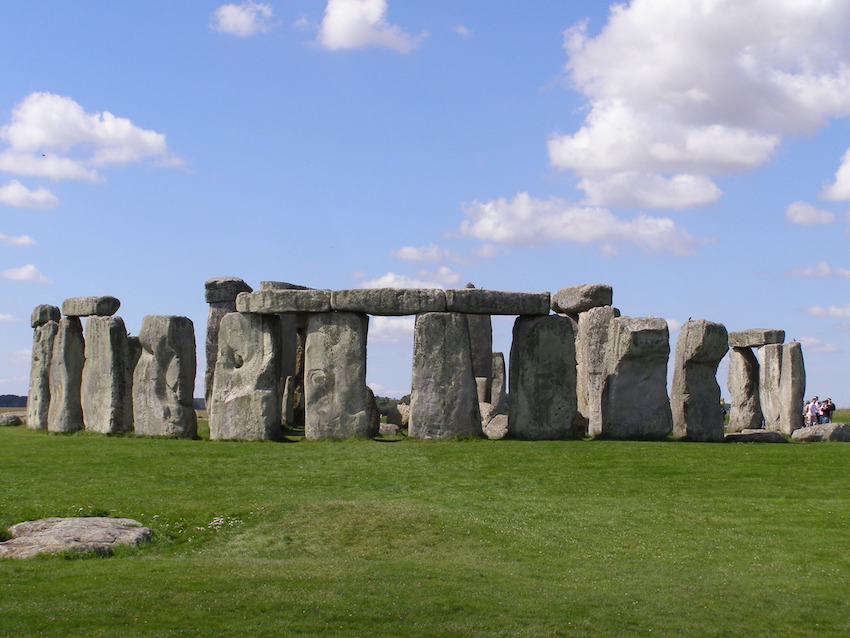NascoBLOG 12

Author: garethwiscombe Source
GREETINGS AND A VERY HAPPY NEW YEAR 2014 TO YOU ALL
NascoBlog12 is my first of the New Year 2014 and continues with more exciting news about the capabilities of the 'Geometriglyph'.
Remember last year I explained that this fascinating device had a built in facility whereby linear measurement could be used to calculate the volume of solids or liquids. Yes, you read it correctly - using a tape measure to determine the liquid content (wine?) of a vessel. Solids are easy because we can measure (a box) linearly and simply multiply to obtain the internal volume.
I have been asked a number of times since, how a tape measure could possibly indicate the volume of liquid in a vessel ? So, here is a short explanation minus mathematics.
So firstly, have quick look again at the Geometriglyph diagram in NascoBlog10. Here you see both rectangular and circular shapes set within a rectilinear compartmental grid. The' inventors' used the edges of the rectangle as linear units and then integrated the spherical (circumferencial) units; the resulting 'Celestial Constant' (5.4545) was the common, universal factor which could be employed to express both units of length as well as volumetric capacity.
NOTE: Anyone interested in studying this subject further, I recommend the excellent research report : PLOS one. An Ancient Relationship between Units of Length and Volume Based on a Sphere. (Zapassky, Gadot, Finkelstein and Benenson. March 28th 2012. Available on-line)
NOTE: Not wishing to be accused of plagerism, I would like to make it clear that whilst I extrapolated the single unit, linear/spherical relationship back in 2002, the above Report considerably strengthend the evidence I had previously uncovered that Greco-Phoenicians may have used a common measuring unit to survey and construct the Nasca Lines..
Another question came up recently: So, just how old is the 'Geometriglyph' since you throw open the statement that the device, seemingly, has roots going back to the ancient Minoan Civilisation, 2700 B.C. - 1500 B.C.?
A very interesting question which I cannot answer fully in a relatively short NascoBlog, however, I promise all of the relevant evidence will be put in front of Readers in the follow-on series of NascoBlogs. So briefly...
a) The Geometriglyph is located on a rocky hillside overlooking the Nasca Lines. Most historians now agree the geoglyphs were possibly in an advanced state of elaboration, circa 800 B.C. There is nothing to suggest that the 'Mandala' is not part of the the Nasca Lines.
b) My research confirms the Nasca geoglyphs were constructed according to astronomical phenomena. The Geometriglyph mirrors this astronomical/geoglyphic relationship, thus the device must also date circa 800 B.C. I believe the Geometriglyph was 'constructed' at its location as a vital surveying tool, not 'invented' on-the-spot for the purpose in hand.
c) The device also mirrors the celestial targets hypothesised for both the Linear Observatory and the vast Landscape Planetarium in the Southern Andes Mountains. (Portraits of the Gods, Nascodex Publications. 2010) The presence of Phoenician inscriptional material at each of these sites allows one to extend the predictive hypothesis to a date between 1100 B.C. (earliest known date for the Phoenician alphabet) and 800 B.C.
However, at this juncture we run into a major anomaly:
d) When I made a comparison between the Geometriglyph and an official ground plan of Stonehenge, not only was there the usual strong correspondence between solar and lunar phenomena but something truly amazing occurred; aligment of the summer solstice sunrise azimuthal exposed Stonehenge's infamous 'Station Stone Rectangle' clearly deliniated within the Geometriglyph's matrix.
Tempted to go a stage further, I found an almost exact coincidence between the 'stone circles' within the Geometriglyph to those within Stonehenge, for example, the Aubrey holes, the 'X' and 'Y' holes and even the Sarcen circle. Next month's NascoBlog13 will include a diagrammatic representation of this remarkable new find and how it was hiding a template of the Great Pyramid of Giza.
Can then the Geometriglyph really be as old as the Pyramids and Stonehenge, 2800 B.C. and beyond? We know for certain who built the Pyramids of Egypt but did these people also design and then help to build Stonehenge, and more important, Why?
Meantime, Good Luck and Very Best Wishes to You All.
There is still time to ORDER your copy of "Portraits of the Gods". Please Click the ORDER BUTTON.
William James Veall